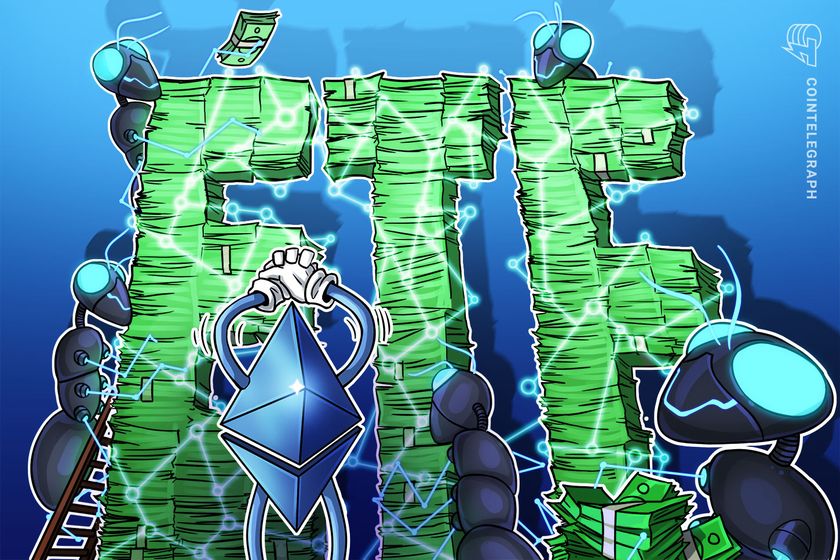What is Bitcoin hash rate and why does it matter?

Cryptocurrency’s hash rate measures a blockchain network’s processing power to process transactions.
How does the hash rate affect Bitcoin price?
The main drivers of Bitcoin’s price include computational power, mining profitability and network difficulty. Since miners are compensated in Bitcoin while incurring costs in local currencies, the hash rate follows the price.
That said, the more computational power the Bitcoin network employs, the higher its value is. Moreover, rational miners are only willing to mine BTC if it is profitable, which implicitly means that any other cryptocurrency with no demand for it would have zero value and miners would redirect its resources elsewhere.
Additionally, the network difficulty can be used as a stand-in for total mining power. This premise is explicitly backed by the algorithm governing the Bitcoin network, meaning that difficulty readjusts to make up for declining or in the opposite scenario, mitigate the impact of growing mining power.
Fluctuations in the price of Bitcoin are significant not only for purely speculative reasons but also for how it affects the energy consumption of the Bitcoin network and how miners that power the Bitcoin infrastructure will behave in the future. In addition, there has long been a belief that the hash rate, or the total number of computations performed by Bitcoin miners, and the price of BTC are related.
Nonetheless, this notion might seem incorrect as a manufacturer’s level of effort in producing a good or service has no bearing on the price consumers pay since producers are price-takers in competitive marketplaces. On the contrary, this might not be true for the Bitcoin market, though, because there are only a few mining pool operators to coordinate their operations to control the market price. Furthermore, the inelastic nature of the Bitcoin supply and the intense competition in the mining industry might drive miners to act differently.
Purchase a licence for this article. Powered by SharpShark.
How does Bitcoin’s hash rate work?
The SHA-256 cryptographic hashing function, which converts any input data into a 256-bit string (the hash), is one of the technologies using which Bitcoin measures its hash rate. Due to the one-way nature of this function, it is simple to determine the hash from an input but not the other way around.
A hash rate, which can be expressed in billions, trillions, quadrillions and quintillions, is a measurement of how many calculations can be carried out each second. For instance, a hash rate of 1BH/s indicates that one billion estimates can be made each second. But, how is Bitcoin’s hash rate measured? Exahashes per second (EH/s) that are equivalent to one quintillion hashes are used to express the hash rate of BTC. By comparing the average time between mined blocks with the network difficulty at a particular time, the overall network hash rate may be roughly calculated.
So, what is mining difficulty? The mining challenge refers to how tough it is for miners to generate a hash lower than the desired hash, which is accomplished by lowering the hashed block header’s numerical value. On average, a new block (Bitcoin) is found every ten minutes. However, if BTC is discovered less frequently than the average time, the difficulty decreases or vice-versa.
Furthermore, it is essential to note that the Bitcoin network’s mining difficulty is automatically changed after 2,016 blocks have been mined. Therefore, depending on the number of miners and their total hashing power in the mining network, the difficulty can be adjusted either higher or downwards. So, what is Bitcoin’s current hash rate?
Although the precise hashing power of Bitcoin is unknown, it can be inferred from the number of blocks currently being mined and the level of block difficulty. So, how to monitor Bitcoin’s hash rate? Blockhain.com offers estimates about Bitcoin’s current hash rate, which is 224.383m TH/s as of September 25, 2022.
Why is hash rate important?
A crucial indicator of a blockchain network’s strength, specifically its security, is its hash rate.
So, what happens if Bitcoin’s hash rate increases? The hash rate rises as more machines are devoted by legitimate miners to finding the next block, signifying that the network’s total computational power is high and it is difficult for malicious actors to interfere with the network. Nonetheless, the majority hash rate controller could reverse his payments by reorganizing payments, leading to double-spending issues due to a fall in the network’s hash rate.
Now, what happens if Bitcoin’s hash rate decreases? A decrease in hash rate exposes the network to cyber criminals and crypto heists due to the low cost of executing a 51% attack. In addition, a lower hash rate makes cryptocurrency less decentralized, posing a considerable risk to crypto investors. To safeguard its users against losing funds, crypto platforms could stop trading or delist a currency if the hash rate suddenly drops. So, Is a high hash rate a good measure of a network’s security?
Similar to the majority of PoW crypto, a more significant hash rate is thought to be better for the overall security and stability of the blockchain network as it means more energy costs, more miners and more time is needed to take over the network.
What is Bitcoin’s hash rate?
The amount of processing and computing power being given to the network through mining is referred to as Bitcoin’s hash rate. A fixed-length alphanumeric code representing any length of words, messages, or data is called a “hash.”
Blockchain technology is the foundation of Bitcoin (BTC) and many other cryptocurrencies. The Bitcoin network is formed by blocks that form a chain dependent on one another. Blocks are akin to files containing information about the most recent transactions made throughout the network.
Smaller blocks require fewer processing resources to validate (or vice-versa) since they behave like data files. Hashing comes into play in this situation. Confirming the integrity of the network transactions is known as “hashing” a block and BTC is given to network or hashing participants as a reward. So, what does hash rate mean for miners and crypto investors?
Calculating a hash rate might assist individual miners in forecasting their profitability. However, as cryptocurrencies are mined with various types of mining equipment, the hash rate of each machine differs. Since varying levels of processing speed, memory and power are needed for mining, the network hash rate increases when mining equipment is upgraded or vice-versa.
Because the network is designed to release a specific quantity of Bitcoin at a time, however, a more robust network does not necessarily lead to BTC being mined more quickly.
The number of miners in the network, mining difficulty and, ultimately, miner profitability are all impacted by changes in hashing power. In addition, the mining challenge rises when more miners join the network because it takes more guesses per second to solve the complex mathematical equation and get the block reward. As a result, the hash rate rises as the difficulty of the Bitcoin network does. Similarly, the hash rate is a crucial indicator for cryptocurrency investors of how secure a cryptocurrency’s proof-of-work (PoW) network may be against hackers. That said, network attacks become more expensive and challenging as the hash rate increases.










